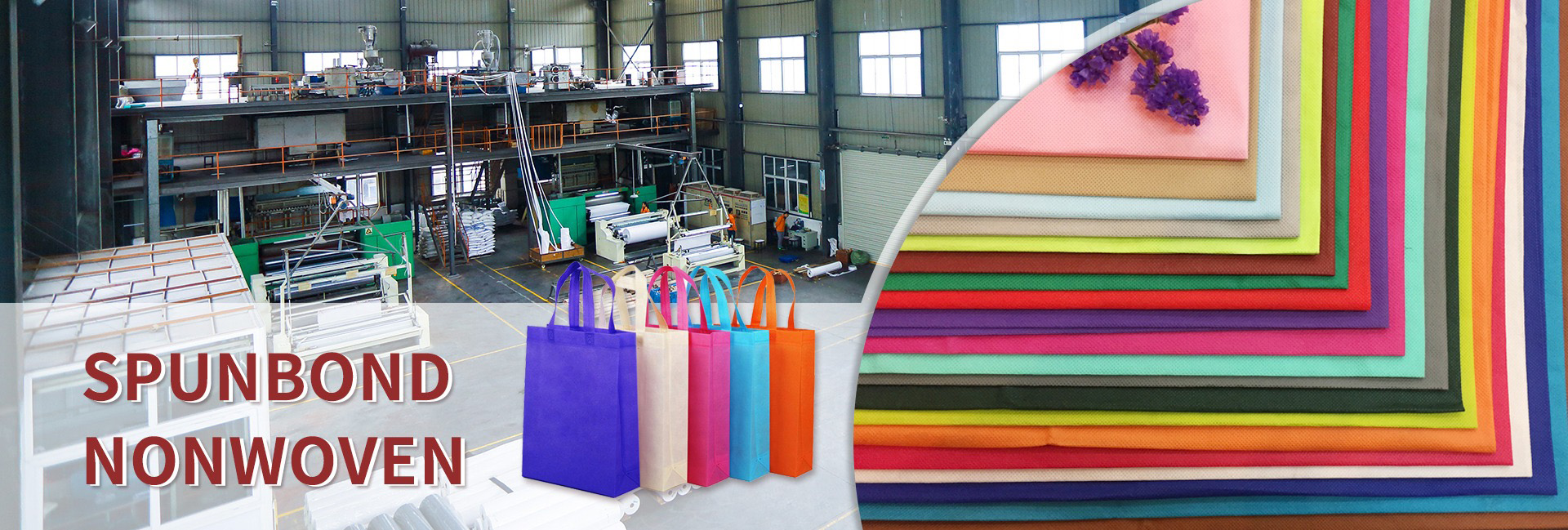Under the shadow of “white pollution,” the sustainability promises of traditional plastic packaging often seem weak and lackluster. However, a breakthrough in the materials field is bringing hope to this predicament: biodegradable spunbond packaging bags have achieved an exceptional natural degradation rate of over 90% under standard conditions, truly transforming environmental commitments from slogans into scientific reality.
A Fundamental Shift in Materials Philosophy
The core advantage of traditional plastics lies in the stability of their chemical structure, which is precisely the root cause of their persistent environmental scourge. The design philosophy of biodegradable spunbond fabric is diametrically opposed—after fulfilling its packaging purpose, it can, under certain environmental conditions, be gradually decomposed into water, carbon dioxide, and biomass by naturally occurring microorganisms, ultimately returning to nature.
Technical Pathways: Current mainstream technologies include:
Biodegradable (e.g., PLA): Made from renewable plants like corn and cassava, these materials fundamentally break free from dependence on petroleum.
Additive biodegradation (e.g., PBAT/PPC): Biodegradation aids are added to the polypropylene (PP) matrix, enabling it to be decomposed by microorganisms under specific conditions.
What does a “degradation rate exceeding 90%” mean?
This figure is not groundless; it generally refers to the degree to which the material is decomposed within 180 days under standard industrial composting conditions. It is backed by rigorous scientific certifications (e.g., EU EN13432 and US ASTM D6400). This means:
A true closed-loop
Packaging bags no longer need to “sleep” in landfills for centuries. Instead, they can enter specialized organic waste treatment systems, where they are converted into soil-friendly humus and participate in the ecological cycle.
A solemn commitment to the environment
“Over 90%” is a watershed distinction, clearly distinguishing them from “pseudo-degradable” products that only break down into microplastics, ensuring that no harmful residues remain in the environment at the end of their lifecycle.
The cornerstone of brand trust: This quantifiable and verifiable data provides brands with the strongest environmental credentials, providing scientific backing for claims like “green” and “eco-friendly,” ensuring they withstand scrutiny from consumers and the most discerning environmental organizations.
Achieving a Balance of Performance and Environmental Protection
A common misconception is that degradability implies compromised performance. However, modern biodegradable spunbond technology achieves a balance between performance and performance:
Load-bearing and Durability: Inheriting the flexible and tear-resistant physical properties of spunbond, it is suitable for a wide range of packaging needs, from luxury goods to handbags.
Printing and Aesthetics: It also offers superior printability, perfectly capturing brand designs and maintaining a premium aesthetic.
Commercial Viability: With the maturity of the technology and scaled-up production, its cost is continuously optimized, now within the affordable range of brands, making it a cost-effective and sustainable investment.
Reshaping the Green Supply Chain
The ripple effects of this breakthrough are spreading across the entire supply chain:
The Ultimate Solution for Brands: This solution offers a near-perfect solution currently available for brands committed to achieving “net-zero emissions” and “full-circular packaging.”
A Peace of Mind for Consumers: This solution frees environmentally conscious consumers from the moral dilemma of “loving the product” versus “hating the packaging” when purchasing their desired products.
Positive Response to Policies and Regulations: With increasingly stringent plastic restrictions and bans globally, the emergence of biodegradable spunbond packaging bags offers the industry a viable path to comply with these policies without sacrificing user experience.
Conclusion
When packaging’s end goal is no longer permanent pollution, but a gentle return to nature, we have taken a solid step towards a more responsible production and consumption model. With a natural degradation rate exceeding 90%, biodegradable spunbond packaging bags not only address the technical challenges of “white pollution,” but also reshape the harmonious relationship between packaging and the environment.
It announces the arrival of a new era: the most successful packaging is not only a business assistant and a carrier of aesthetics, but also a polite passerby in nature – making full use of it when it comes and leaving without a trace when it leaves.
Dongguan Liansheng Non woven Technology Co., Ltd. was established in May 2020. It is a large-scale non-woven fabric production enterprise integrating research and development, production, and sales. It can produce various colors of PP spunbond non-woven fabrics with a width of less than 3.2 meters from 9 grams to 300 grams.
Post time: Oct-27-2025

